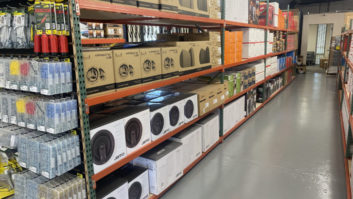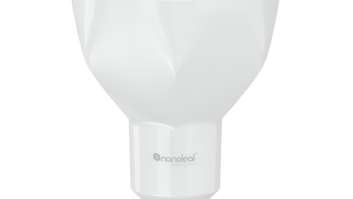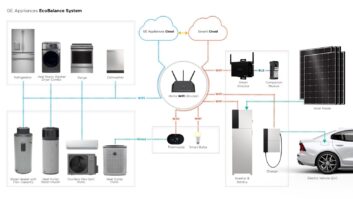Aiwa will target the portable audio, VCR, and computer peripherals markets for growth while defending its number one minisystem share with upgraded dealer support and a greater selection of step-up products, marketing VP Akio Imanishi told TWICE. Aiwa’s minisystem plans, he said, will help the company weather the shelf-system market’s shrinking growth rate, expected by the industry to slow in 1996 to single digits.
Imanishi, who took his present post after a stint as Aiwa U.K. marketing and planning manager, also told TWICE that despite previous denials, Aiwa has left the MiniDisc market in the U.S. and “has no plans” to re-enter. In part, Aiwa’s strategies reflect the company’s intention to transform itself from an audio company into an audio/video/communications company, Imanishi said. “It takes time, but at some stage, you must start.”
Through this year Aiwa will limit its U.S. communications products PC peripherals, though it has corded, cordless and wireless phones in other markets, he said. Aiwa’s PC line now includes modems, CD-ROM drives with powered speakers, and a backup tape drive. It is test-marketing them through Computer City. Next year, Imanishi said, Aiwa “will start full distribution to our existing partners and to new distribution.”
In video, Aiwa will be adding some conventional VCRs to complement its two multi-standard models. Video is a “tough area,” he admitted, but it’s also “an inevitable area” for Aiwa given the market’s size. “We will not lose money in VCRs, but the profit level will be very low.”
As for DVD and digital VCR products, he said that Aiwa won’t have them this year, but probably will at some later date. TV/VCRs, on the other hand, are not in Aiwa’s future because TV and VCR prices are “dropping so fast” that combos “are more costly” than separates, Imanishi pointed out. Aiwa is also hampered in that market because it doesn’t manufacture its own TVs, he noted. So it has discontinued the two models it introduced last year.
Imanishi said that Aiwa’s portable audio market share is at a “lower than satisfactory level,” though he said the company ranks number two or three in headphone stereo dollar volume with a 7% to 8% share and ranks about fifth in CD boombox dollars. “I see more room for us to grow, particularly in headphone stereo,” he said, stressing Aiwa’s status as one of only three Japanese companies worldwide — Sony and Matsushita included — that operate their own headphone stereo factories. “Therefore, it is very important to us.” Last year, Imanishi noted, Aiwa expanded its selection of boombox CDs and headphone cassettes featuring digital tuners. “Our headphone stereo lineup is moving heavily toward built-in radios.”
This year Aiwa plans more sports-type portables. That, he said, should help Aiwa get more shelf space, as dealers often add sports-type models to their selection even when they have similarly-priced non-sports product. Also due in 1996 are lower-priced headphone cassette models.
In shelf systems, Imanishi warned that a “serious survival game is starting” as growth slows. In reaction, Aiwa will upgrade its dealer-support program with more merchandising materials, sales training, and an expanded effort to help dealers with in-store events.
Imanishi said he felt that U.S. dealers handled their own promotional efforts. But the more he meets with buyers, the more he sees that retailers “are hungry for support from manufacturers, which doesn’t necessarily mean price. And Aiwa, he said, should be able to offer more effective support as it completes its conversion from independent reps to an inside field sales force.
In minisystems, Imanishi said he looks for an increased selection of models with advanced features such as surround, Dolby Pro Logic and a 50-disc changer to help increase Aiwa’s dollar volume. “If the quantity is fixed, you must chase value-added.” The step-up strategy reverses a trend to lower price points: “Our number-one selling minisystem has a $300 going price. Two or three years back, manufacturers didn’t think of $300. But you can’t deny that chunk of the business. We had to forget the traditional argument that a branded supplier couldn’t go so low.” Aiwa’s edge over competitors following the same strategy, Imanishi said, is its ability to deliver more performance and features for the dollar, as 85% of its products are made in lower cost plants outside Japan.













